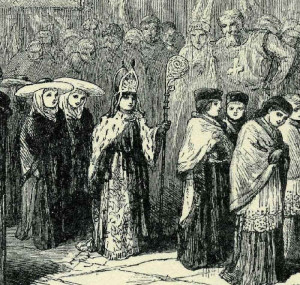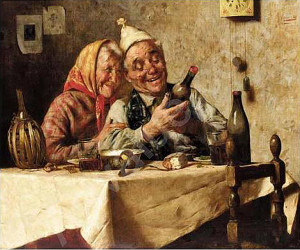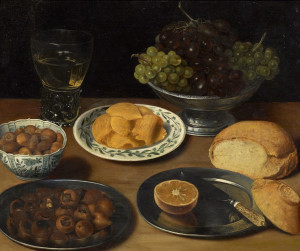THIRD DAY of CHRISTMAS:
Holy Innocents’ Day, Childremas
The Christmas story is not entirely one of peace and harmony. King Herod was one of those greatly disturbed by the news of the birth of the child at Bethlehem, as the story goes, he responded by ordering the slaughter of the children of Judea. These are the Holy Innocents we remember especially on the Third Day of Christmas. It has long been considered an unlucky day, and there are many people who will avoid beginning any venture on the 28th of December for this very reason.
Being focused on those unfortunate children, the Third Day of Christmas has always been about children. One of the oldest traditions associated with this day is the ceremonial beating of children. And before everyone gets all bent out of shape about this, or thinks that I am advocating any particular method of child-rearing, let’s just step back and remember that it was not that long ago that even schools practiced corporal punishment for naughty children. (I was a boy when we moved here to Florida and I distinctly remember being seated in the dean’s office at Deerfield Beach Middle School on my first day with another new kid. He welcomed us, then pulled a wooden paddle out from behind his desk and said, “Ya know, we paddle here, boys,” and I pretty much resolved then to keep out of trouble. And I did.)
The ceremonial beatings for Childremas would be done often with evergreen branches of pine or rosemary or bay, often accompanied by the words Fresh, green, fair and fine / Gingerbread and brandy-wine! The “beatings” were not just for the children; even husbands and wives would exchange token blows on the Third Day of Christmas, as would servants and masters. All of this was in done in good fun and was not at all cruel.
If practical jokes seem childish, then this connection with children may explain the tradition through Spain and Latin America of practical jokes on the Third Day of Christmas. It’s kind of like April Fools’ Day, except the exclamation after the prank is “Inocente!” and the victims of the pranks are called inocentes, too… which obviously takes us back to the Holy Innocents.
In medieval Europe, a Boy Bishop would be elected at cathedrals each Sixth of December for St. Nicholas’ Day. He wore bishop’s vestments and performed all the duties of a bishop (save for celebrating Mass) and his reign ended today, on Childremas, when the Boy Bishop was allowed to be a child once more. The idea of turning reality on its head was a popular one back then, and we’ll see this again tomorrow on the Fourth Day of Christmas with the Feast of Fools.
Of course, children love to turn reality on its head, and this is often the great divide between children and adults. We adults are much less willing to suspend our disbelief and we sometimes are poorer for it. I think of Childremas as a good day to honor children but also to honor the children that we once were. That child is still there, deep inside, deeper for some than for others. But it is important to reconnect with that child every now and then. So go on, break out the marbles or the pogo stick or the video games and give these things you once loved another shot. If you know children now––your own kids or grandkids or nieces or nephews, or the neighbor’s kids––teach them a favorite game you remember from your childhood. Chances are you will both enjoy it.
Image: An old engraving of a Boy Bishop attended by his canons.


